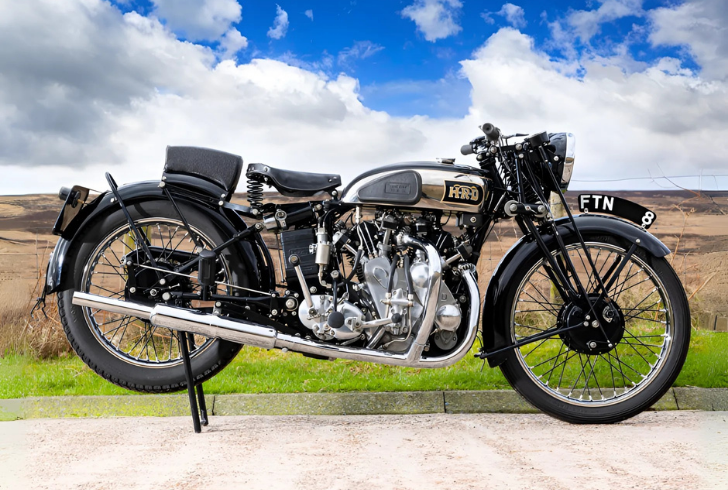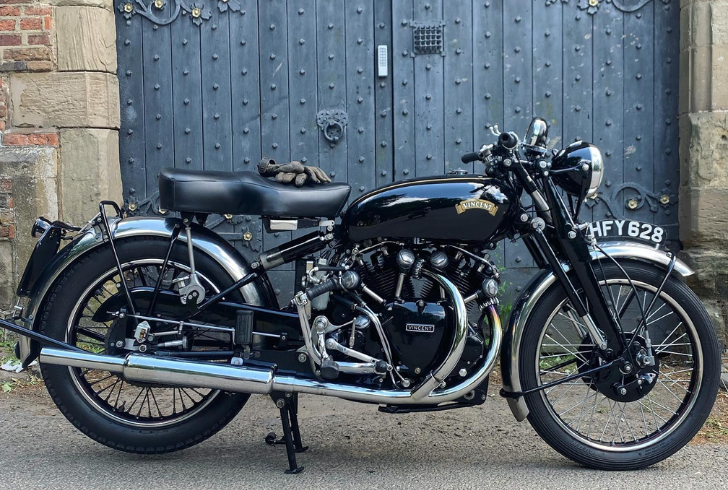The world of motorcycles is a tapestry woven with legendary names – Harley-Davidson, Yamaha, Triumph – each brand boasting a rich history and a passionate following. But not every manufacturer endures the test of time.
Vincent HRD, once a titan of the industry, now exists primarily in the hearts of dedicated enthusiasts. Is HRD gear still in business? The answer, unfortunately, is no, but the legacy of Vincent HRD motorcycles continues to inspire and intrigue.
A Golden Age of Speed and Style

Vincent HRD, established in 1928, carved its niche in the motorcycle world by crafting machines that were both beautiful and brutally fast. Their bikes, particularly the Vincent Black Shadow, were the epitome of performance, turning heads and leaving competitors in the dust. These weren’t simply motorcycles; they were rolling works of art, meticulously built with an emphasis on quality and exceptional engineering.
The Post-War Downturn
World War II, however, proved to be a turning point. While Vincent HRD initially transitioned to wartime production, the post-war landscape presented a different challenge. European economies were in shambles, and the demand shifted towards affordable, practical transportation.
Vincent HRD, however, remained steadfast in its commitment to premium, handcrafted motorcycles. This unwavering dedication to quality, while admirable, proved to be their undoing. The market craved budget-friendly options, and Vincent HRD’s high-priced machines simply couldn’t compete.
A Company Doomed by Its Own Ideals
Company owner Phil Vincent’s refusal to compromise on quality ultimately sealed the fate of Vincent HRD. Attempts to revive the brand by dropping the “HRD” and focusing on the American market proved futile. By 1955, the company succumbed to financial woes, leaving behind a legacy of exceptional motorcycles and a cautionary tale about the importance of adapting to changing market demands.
The Phoenix (Almost) Rises
The story of Vincent HRD, however, doesn’t end there. The decades following their demise have witnessed several attempts to resurrect the brand. In 1994, entrepreneur Bernard Li acquired the rights to the Vincent name, launching Vincent Motors USA with the intention of producing modern interpretations of classic Vincent HRD motorcycles. While prototypes were developed, Li’s untimely death in 2008 tragically cut the revival effort short.
Licensed Models and the Future

The spirit of Vincent HRD lives on in the form of licensed models produced by other manufacturers. HRD Engineering, an Australian company with no direct connection to the original VRHD, has created the Irving-Vincent line, which blends the classic design elements with modern sensibilities.
Similarly, JMC Classics offers the Egli-Vincent, a Vincent motorcycle built around a custom Egli frame. These interpretations pay homage to the Vincent legacy, even though they lack the widespread recognition of the original brand.
A Spark of Hope? A Potential Indian Resurrection
As recently as 2022, rumors swirled about a potential large-scale resurgence. Is HRD gear back in business? Not yet, but reports indicated that the Indian manufacturer Bajaj Auto might have acquired the Vincent brand rights. Whether through Bajaj or another entity, the future of Vincent motorcycles might not be as bleak as it once seemed.
The story of Vincent HRD is a poignant reminder of the delicate balance between tradition and innovation. While their unwavering commitment to quality is admirable, their inflexibility in the face of a changing market ultimately led to their demise. However, the enduring fascination with Vincent motorcycles and the ongoing attempts at revival demonstrate the power of a brand built on excellence and speed. Perhaps, one day, the world will once again witness the thunderous roar of a Vincent HRD on the open road.
